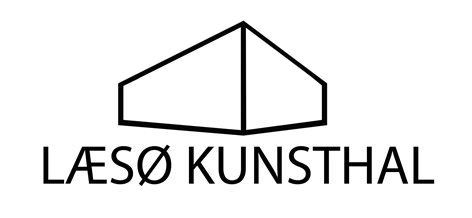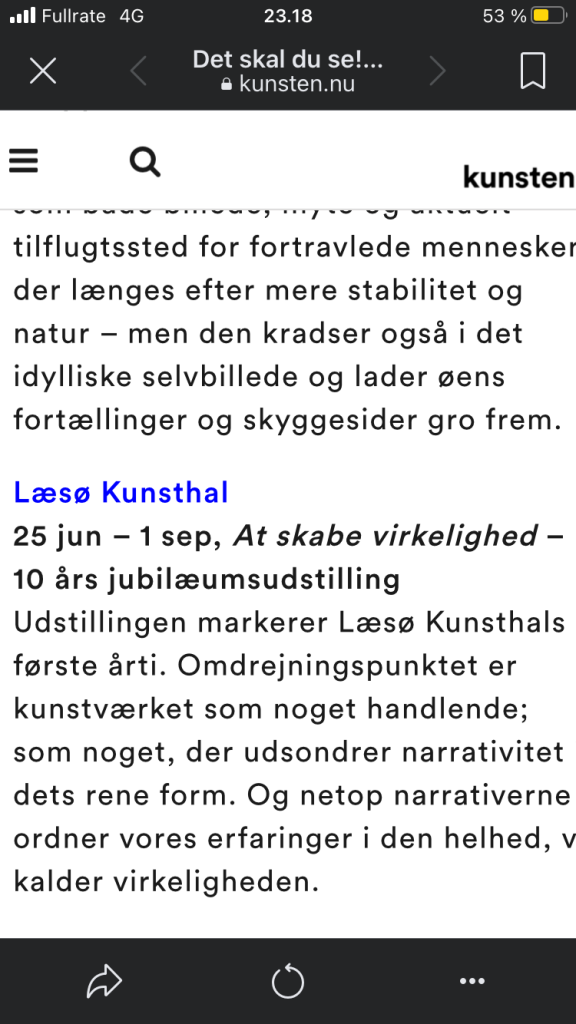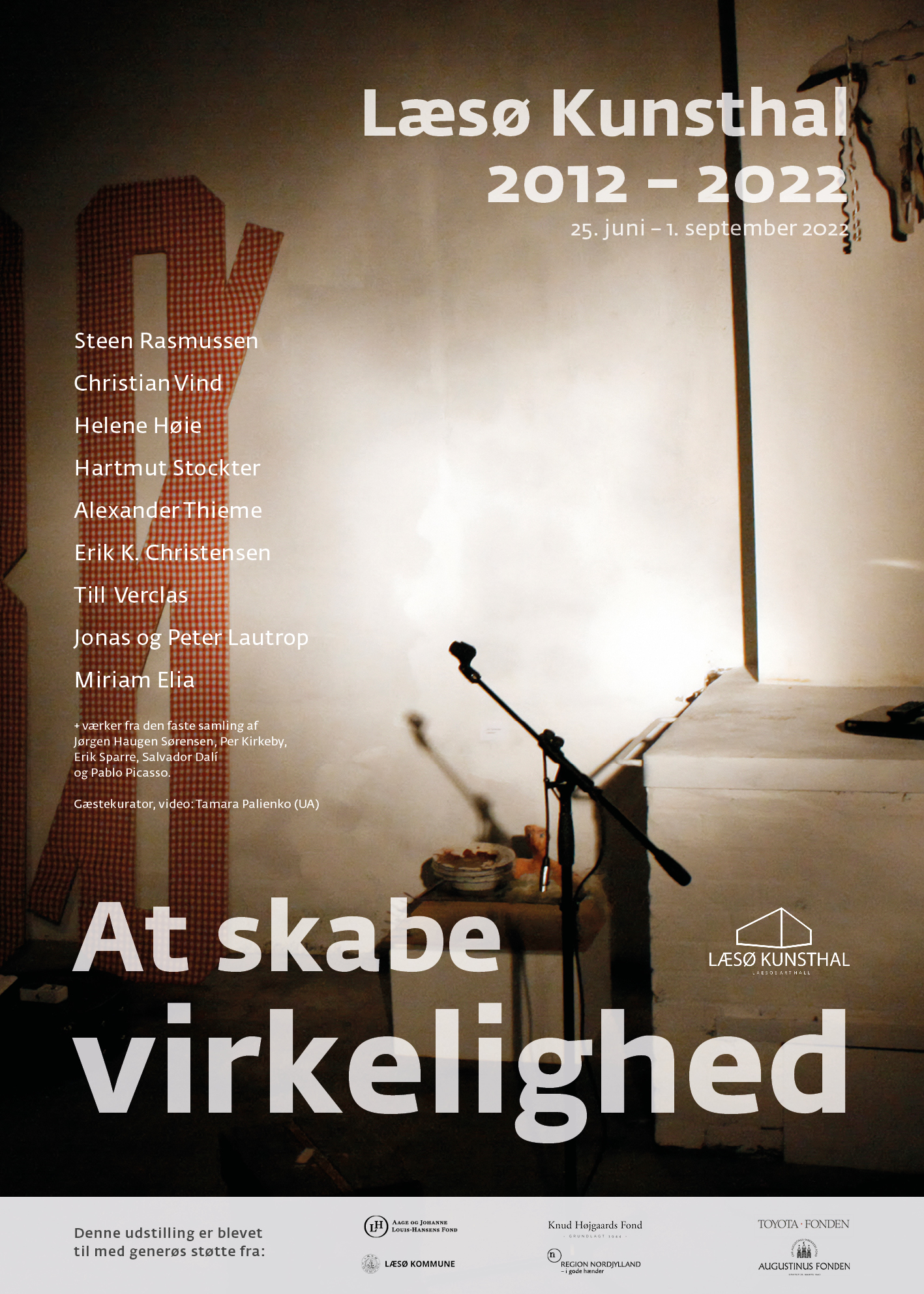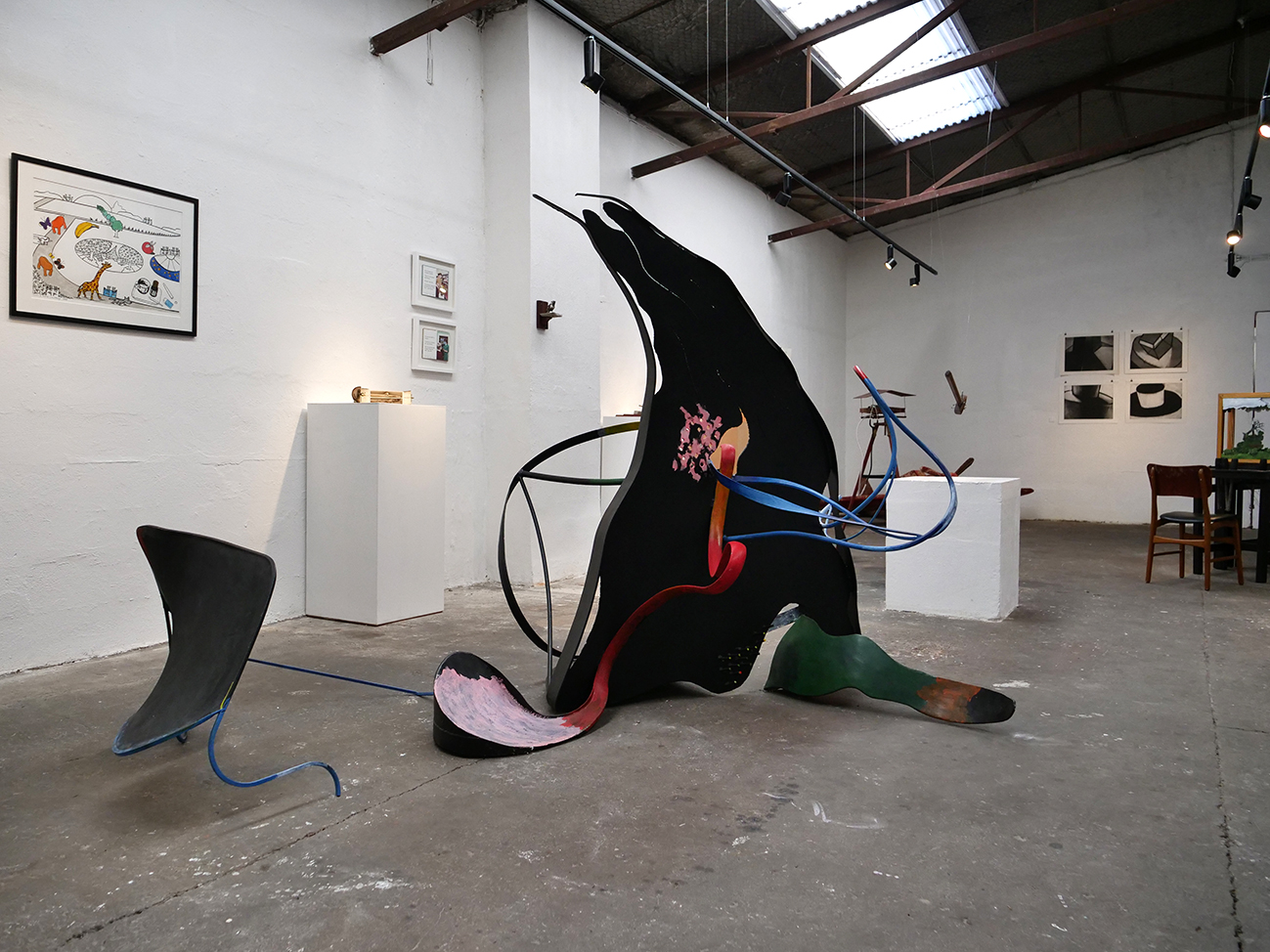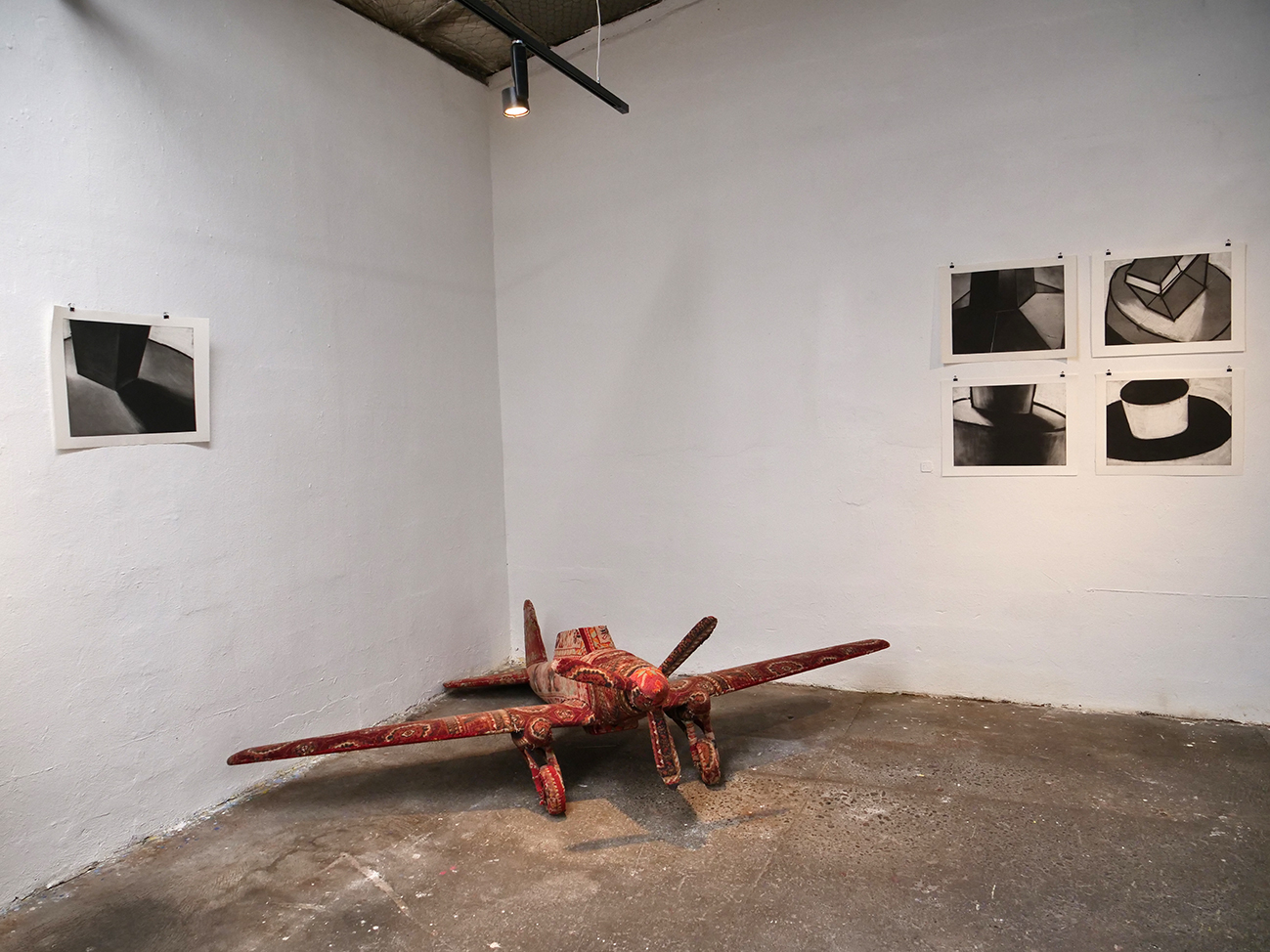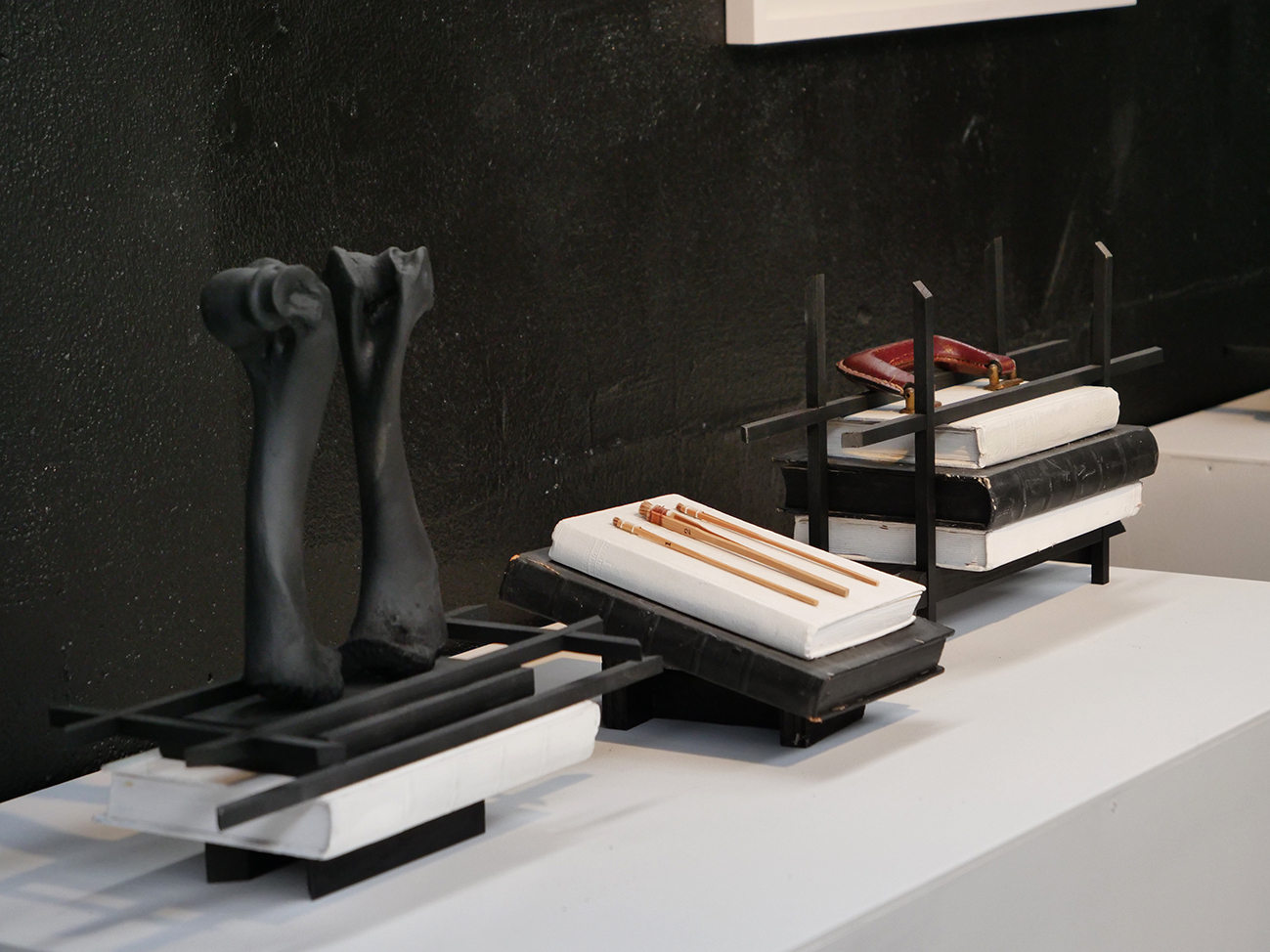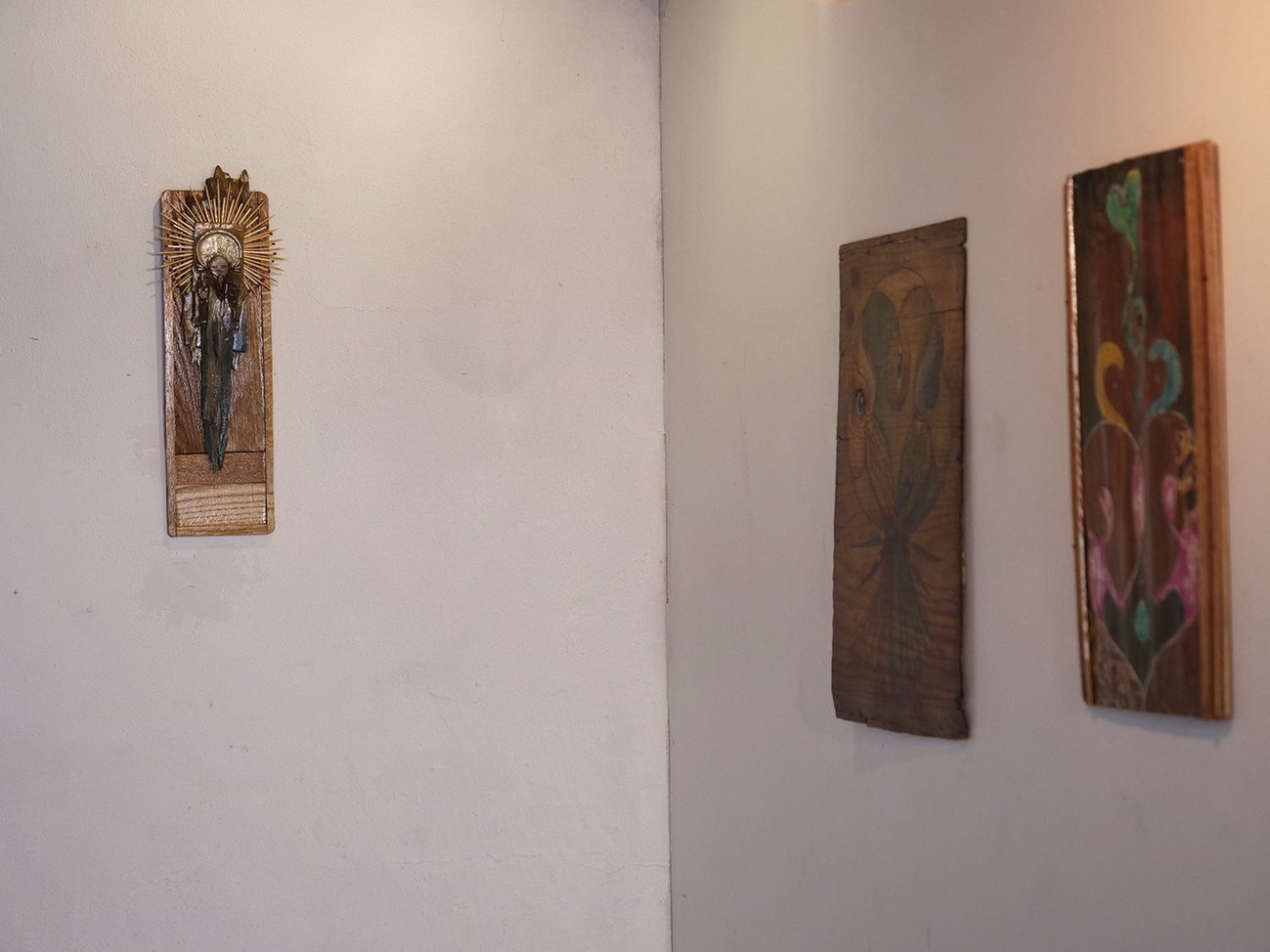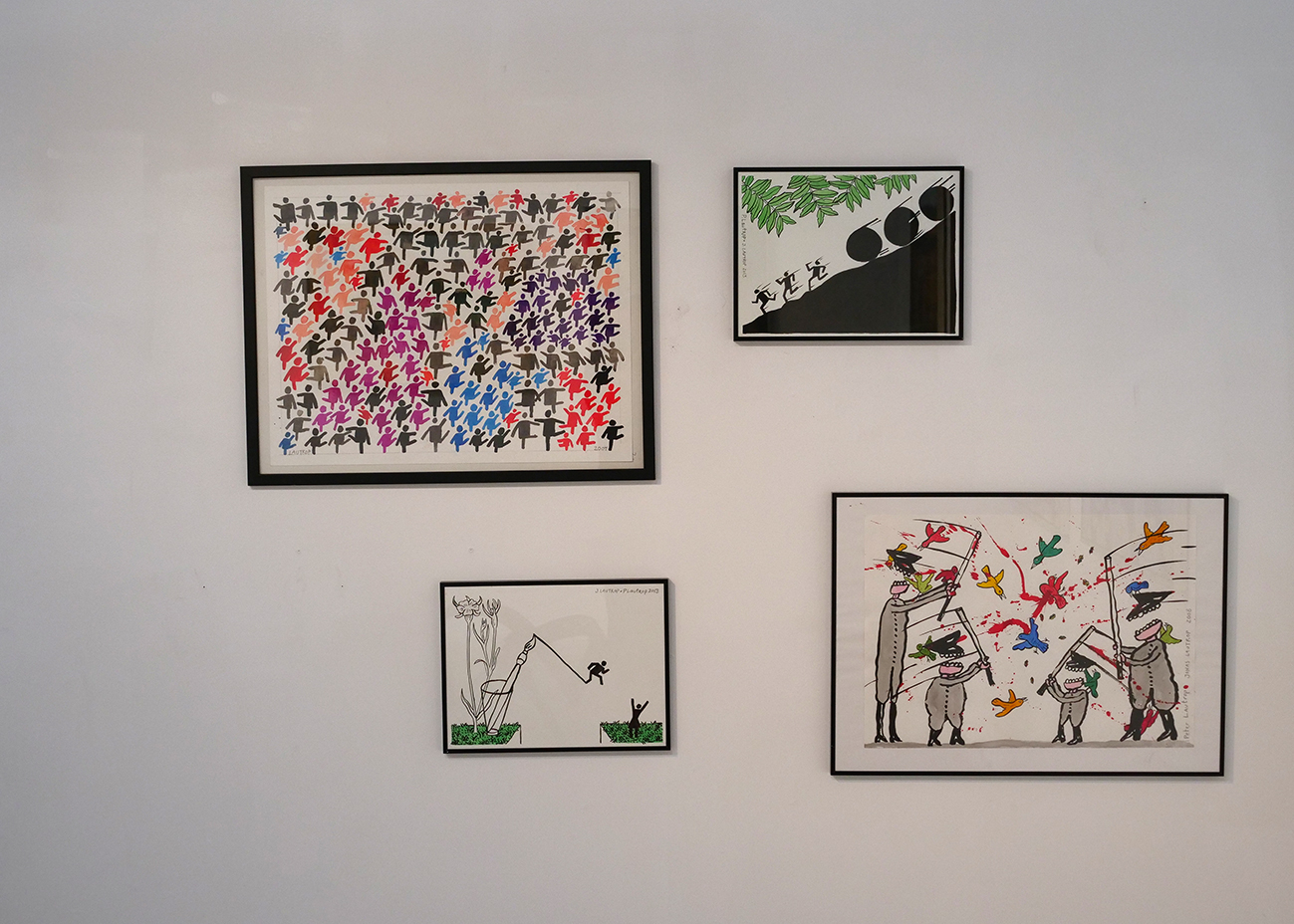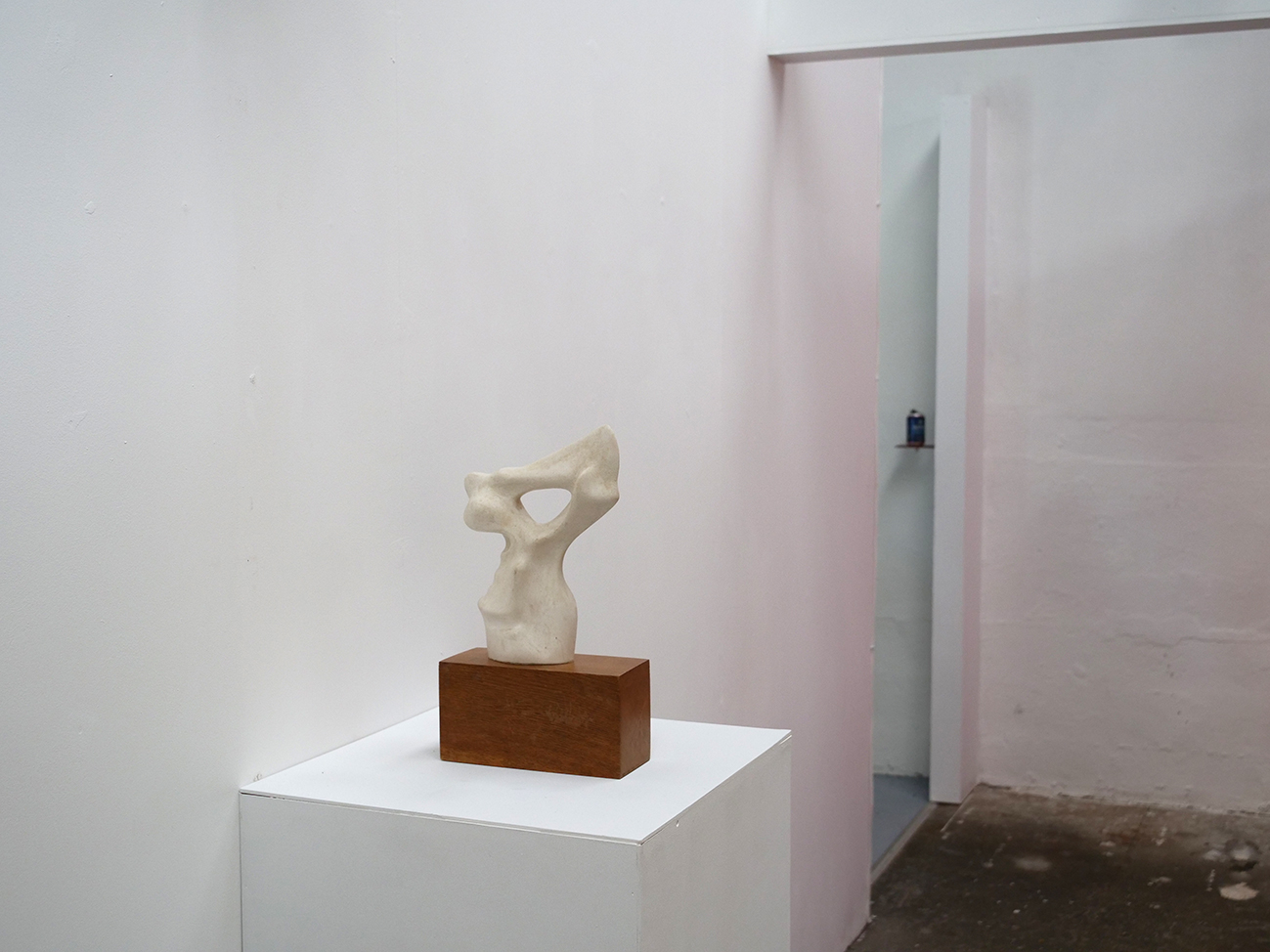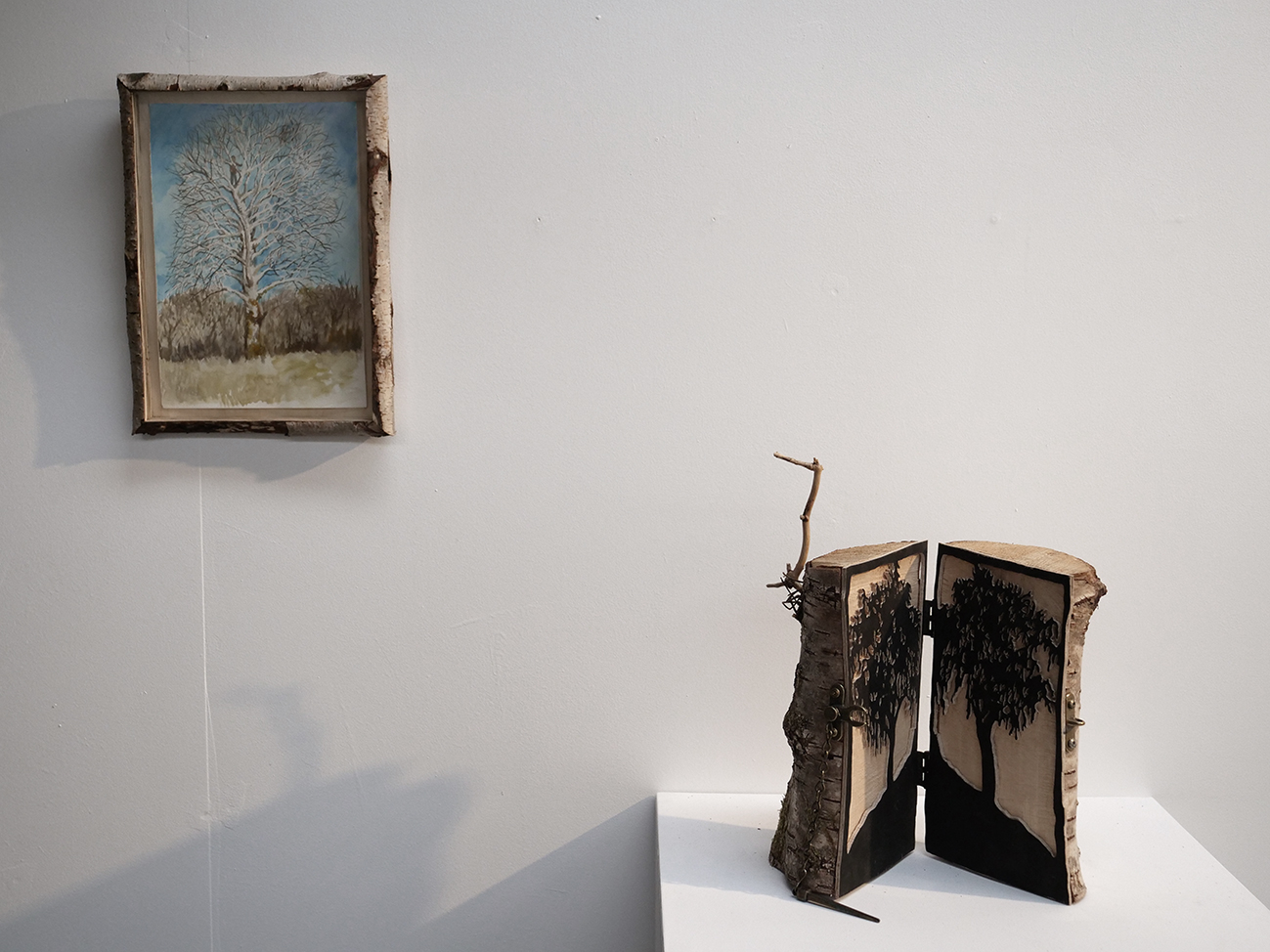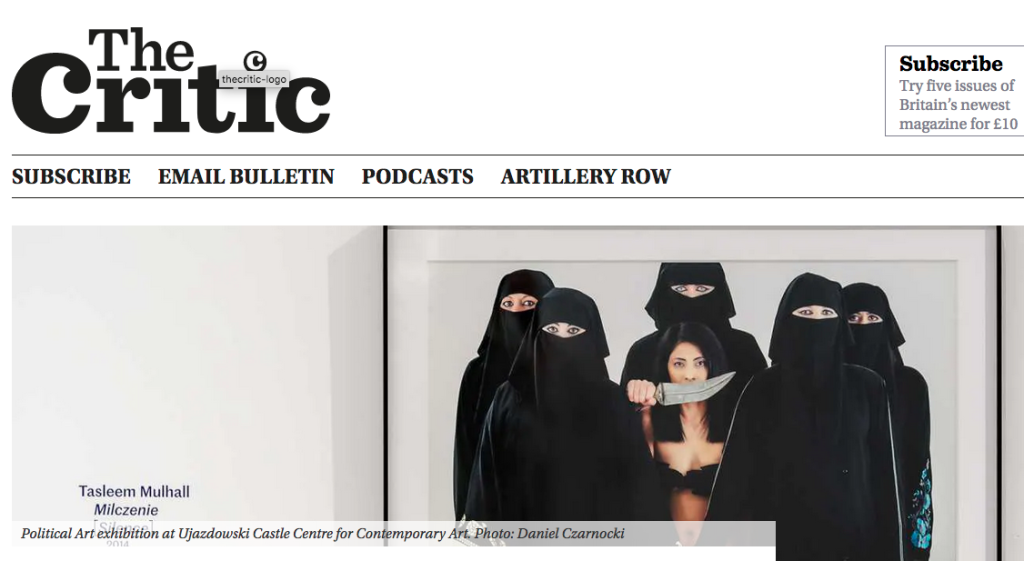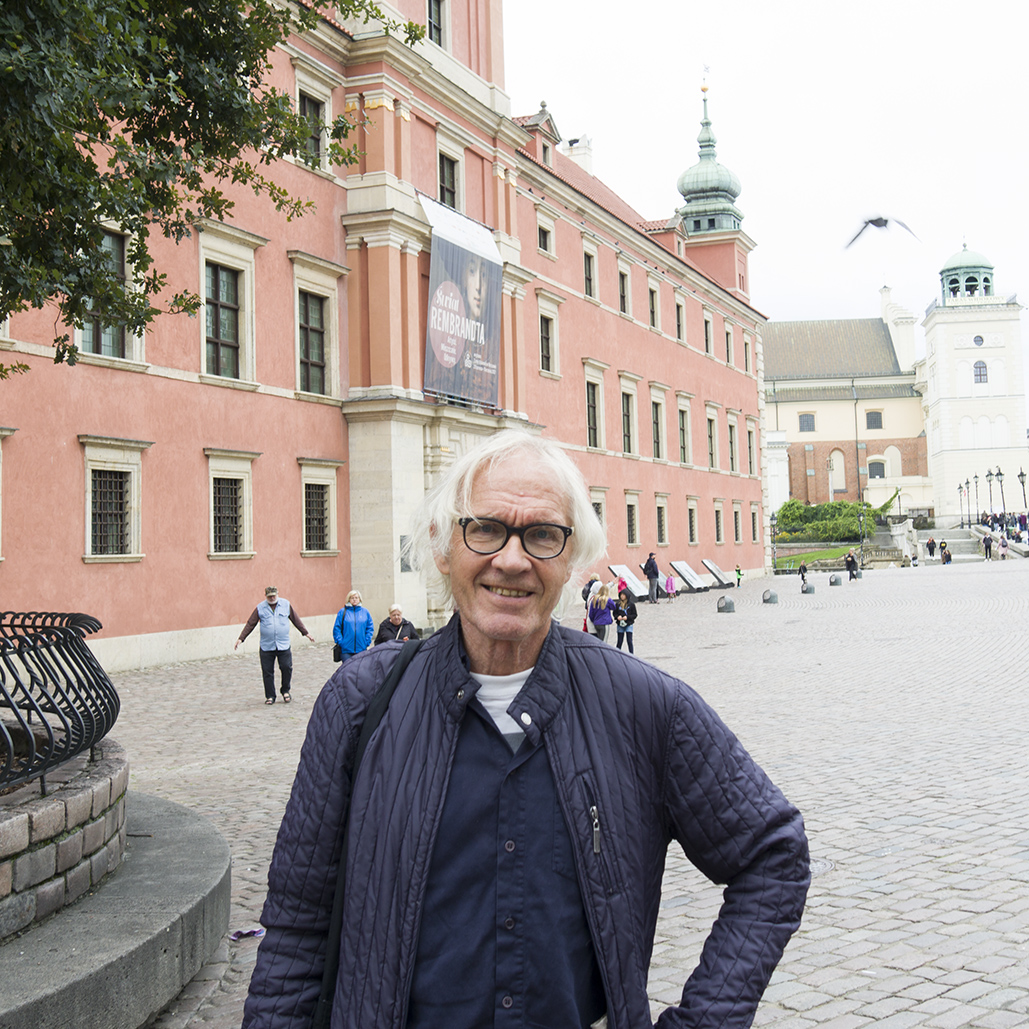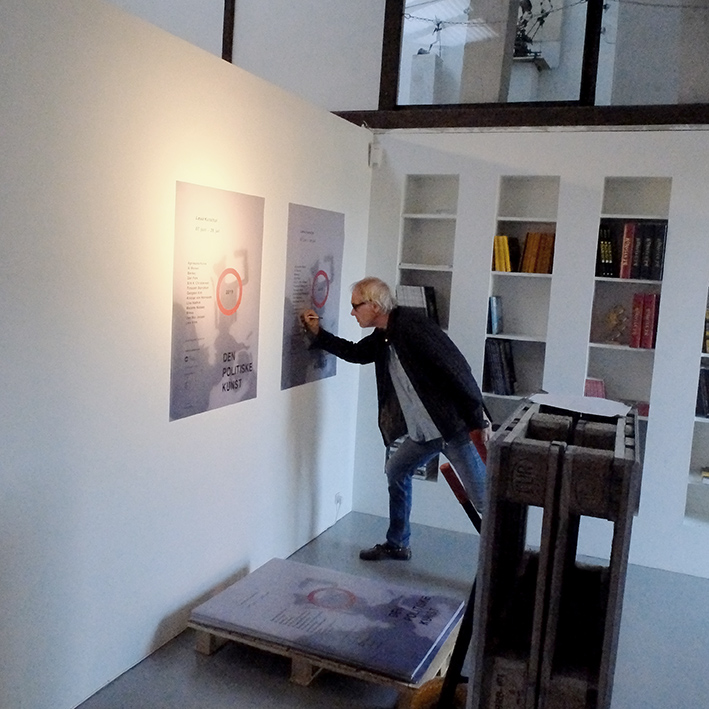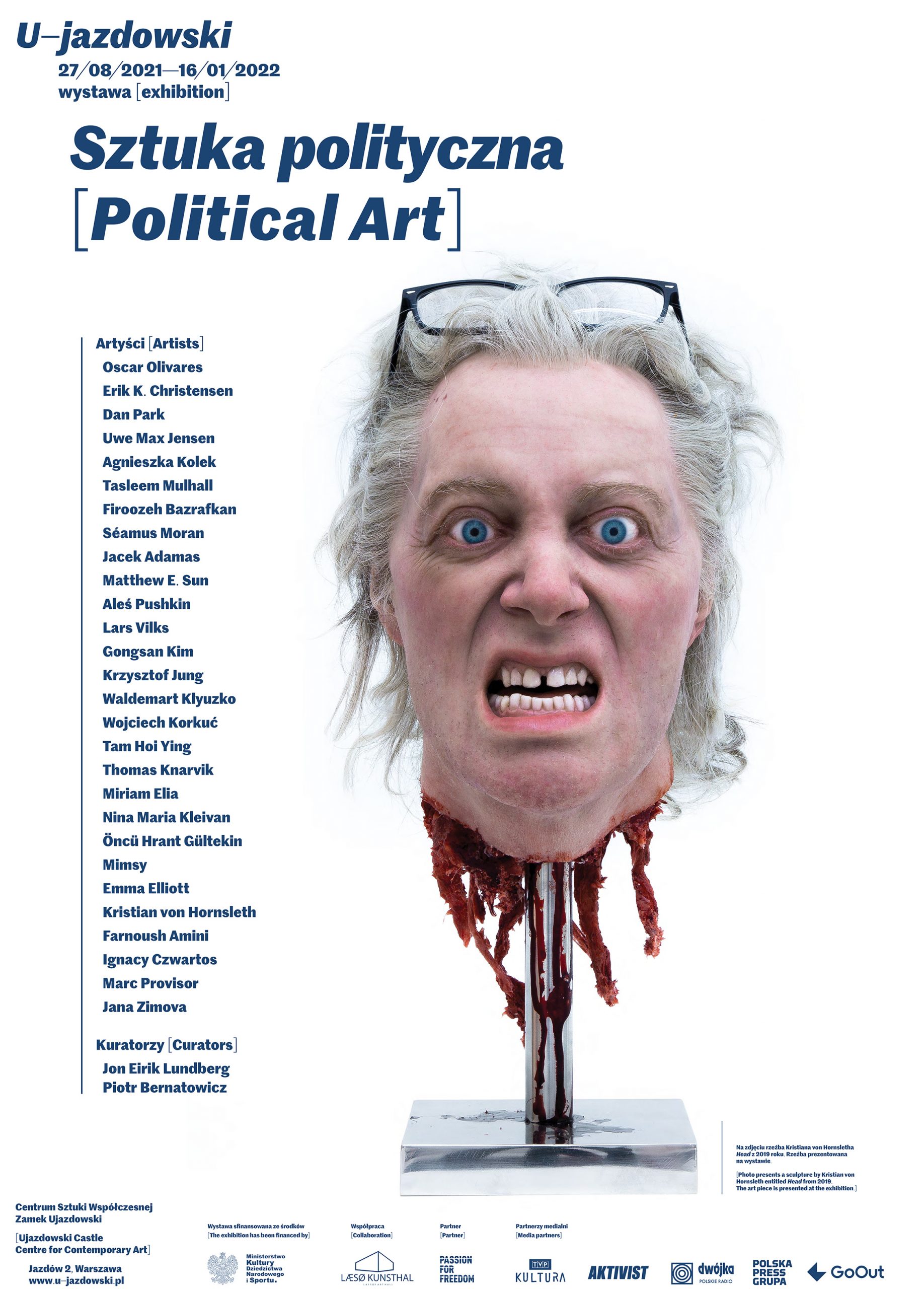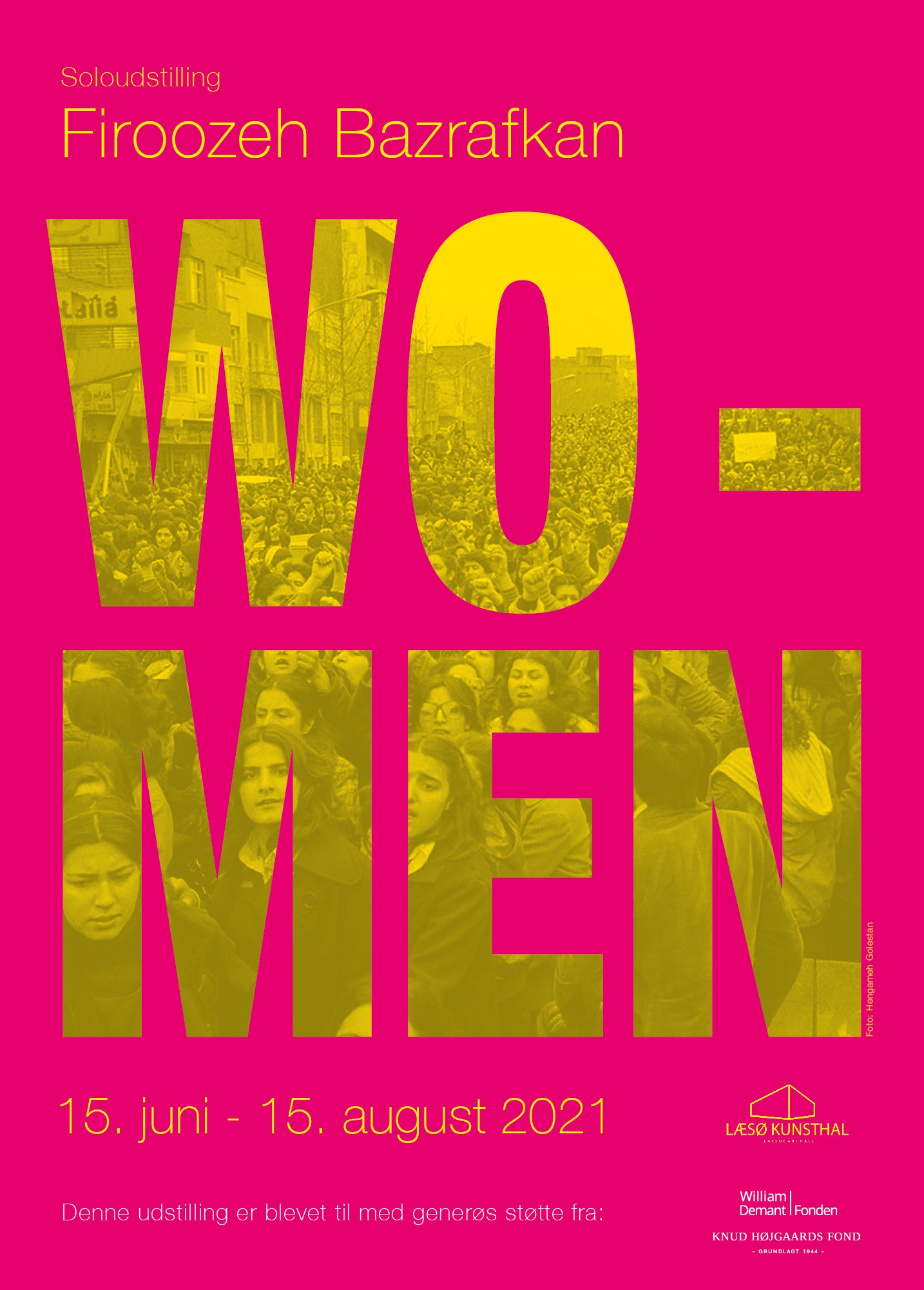Bogen kan bestilles hos Bogreolen og alle andre boghandlere
DOKUMENTARIUM
Dato: 15.05. 2019
Medie: LæsøPosten
Journalist/skribent: Læserbrev
af Jess Jessen-Klixbüll
Citat:
”Provokation via kunst
Det er med “skræk og undren”, at jeg på Læsø Kunsthals Facebook profil ser, at udstillingen omfatter værker fra en kunstner (Lars Vilks, red.), der bidrog med Muhammed tegningen og som førte til attentatet med mordene ved Krudttønden og Synagogen i København. Der er også en kontroversiel kunstner (Uwe Max Jensen, red.), der optræder som kandidat ved det kommende folketingsvalg for partiet Stram Kurs, med synspunkter der ligger meget langt fra mine.
Jeg skal ikke gøre mig klog på kvaliteten af de planlagte udstillede værker, men tror ikke på, at Læsø har behov for den opmærksomhed, som den udstilling kan tiltrække.
Det er en almindelig kendt metode for kunstnere at provokere med happenings og udtryk, der skaber opmærksomhed.
Man kan få den tanke, at de ikke selv har fået nok opmærksomhed som børn, hvorfor det nu er os andre, det skal gå ud over.
Blandt de udstillende kunstnere er der bl.a. Stram Kurs kandidaten Uwe Max Jensen, der ynder offentligt at tegne med sit lem og med urin og fækalier, Muhammed tegneren Lars Vilks, der konstant er under politibeskyttelse efter Krudttønden, og racismedømte Dan Park fra Sverige.
Jeg kan ikke se, om der er nogle af de kunstnerne, der skal åbne eller besøge udstillingen på Læsø (Lars Vilks deltog i åbningen, red.).
Uanset det vil udstillingen kunne tiltrække noget af alt det, som vi netop gerne vil undgå på Læsø. Jeg tør ikke tænke på, hvad en episode som en af de ovennævnte, vil kunne gøre ved opfattelsen af, at Læsø er et meget sikkert sted.
Var det en ide, at indhente en trusselsvurdering fra PET på den planlagte udstilling? Sikkert er det, at opgaven bliver for stor for vores egen enlige landbetjent.”
Kilde: Papiravisen
Relevans: Det første læserbrev om / imod udstillingen.
Dato: 21.05. 2019
Medie: Ritzau.dk
Journalist/skribent: Pressemedd.
Citat:
Ai WeiWei, Lars Vilks, Dan Park, Firoozeh Bazrafkan, Agnieszka Kolek, Erik K. Christensen, Gongsan Kim, Kristian von Hornsleth, Lina Hashim, Madame Nielsen, Mimsy, Uwe Max Jensen og Banksy. 13 politiske kunstnere fra ind- og udland bidrager i sommer til den første gruppeudstilling af sin art herhjemme, når Læsø Kunsthal 7. juni åbner udstillingen “Den politiske kunst”.
Kilde: https://via.ritzau.dk/pressemeddelelse/kunsthal-praesenterer-politiske-rebeller?publisherId=3929013&releaseId=13573849
Relevans: Gengivelse af pressemeddelelse.
Dato: 28.05. 2019
Medie: dr.dk
Journalist/skribent: Kulturen på P1 v/ Jesper Dein og Tore Leifer
Citat:
”Læsø syder: Provokerende kunst provokerer. Og når Læsø Kunsthal næste fredag åbner for udstillingen ‘Den politiske Kunst’, har der allerede været godt gang i diskussionerne på øen. For kunstnere og kuratorer bag en efterfølgende udstilling har meldt ud, at de ikke vil lave deres kommende udstilling i kunsthallen, hvis et par af de udstillede kunstnere på ‘Den politiske Kunst’ ikke pilles ud af udstillingen. Og nogle af beboerne på øen er også utrygge, for blandt de udstillede er kunstnere, der før har fremkaldt både ballade og sågar terroraktioner.”
Kilde: https://www.dr.dk/radio/p1/kulturen-pa-p1/kulturen-pa-p1-2019-05-28?fbclid=iwar30bmnycthbhni97ezlbc7psurzcmvvaxemfmaludaakpsdffmv6_flvtm#!01:10:36
Relevans: Interview i P1 om den kommende udstilling i anledning af kunstnerboykotten og det første læserbrev mod udstillingen.
Dato: 28.05. 2019
Medie: dr.dk
Journalist/skribent: Kasper Madsbøll Christensen
Citat:
”Drama på Læsø: Kunstnere kræver kontroversielle værker fjernet fra galleri
En udstilling om politisk kunst har skabt røre på den lille ø i Kattegat.”
Kilde: https://www.dr.dk/nyheder/kultur/drama-paa-laesoe-kunstnere-kraever-kontroversielle-vaerker-fjernet-fra-galleri
Relevans: Artikel baseret på radiosamtalen om udstillingen.
Dato: 29.05. 2019
Medie: kulturmonitor.dk
Journalist/skribent: Kasper Schultz Lund
Citat:
”Udstillingen ‘Den politiske kunst’ er ikke engang åbnet for offentligheden endnu. Alligevel har den skabt voldsom røre på Læsø, hvor flere kunstnere har krævet en række kontroversielle værker fjernet fra udstillingen.”
Kilde: https://www.kulturmonitor.dk/udstilling-om-politisk-kunst-skaber-drama-paa-laesoe/
Relevans: Artikel om den kommende udstil-
ling.
Dato: 06.06. 2019
Medie: dr.dk
Journalist/skribent: Kulturen på P1 v/ Karen Secher og Jesper Dein
Citat:
Kilde: https://www.dr.dk/radio/p1/kulturen-pa-p1/kulturen-pa-p1-2019-06-06?fbclid=iwar1fpiy8v6vkgmlsb_ydieprl08u7moru0kwozqs_mwrf-pmrmb_pvyfvgo#!01:01:43
Relevans: Samtale om Weekendavisen og Ai Weiwei.
Dato: 07.06. 2019
Medie: svt.se
Journalist/skribent: N/A
Citat:
”Den kinesiska konstnären Ai Weiwei väljer att inte ställa ut sina verk på en konstutställning på den danska ön Læsø i Kattegatt. Utställningen har mötts av kritik och starka känslor med anledning av två kontroversiella konstnärers, svenske Dan Parks och danske Uwe Max Jensens, medverkan.”
Kilde: https://www.svt.se/nyheter/ai-weiwei-drar-sig-ur-politisk-konstutstallning?fbclid=IwAR3HzBv-OgiD0gDfip5Y6HjzO5mbqVYohbUrQSiTpR4VvsI6gOyf2apoFj0
Relevans: Nyhedsopslag om udstillingens åbning i svenske TV-nyheder.
Dato: 10.06. 2019
Medie: seneste-nyheder.eu
Journalist/skribent: Gengivelse af artikel i Berlingske
Citat:
”Medlem af Statens Kunstfond boykotter kontroversielle og kriminelle kunstnere”
Kilde: http://www.seneste-nyheder.eu/artiklen/medlem-af-statens-kunstfond-boykotter-kontroversielle-og-kriminelle-kunstnere/2312684
Relevans: Artikel om kunstnerboykotten.
Dato: 11.06. 2019
Medie: dr.dk / Kulturen på P1
Journalist/skribent: Sarah Randeris
Citat:
”Den politiske kunst på Læsø: Der var massivt politiopbud, da Læsø Kunsthals nye udstilling åbnede i fredags. Udstillingen “Den politiske kunst” har været flere år undervejs og allerede inden ferniseringen, har den skabt heftig offentlig debat. Nu er dørene åbnet, og Kulturen på P1 har besøgt kunsthallen på Læsø.”
Kilde: https://www.dr.dk/radio/p1/kulturen-pa-p1/kulturen-pa-p1-2019-06-11?fbclid=iwar13rslwbthzth5poe1oyh7g7rtaroe7_kzzbjq9sb6opnsurq9chpq-hl8#!00:58:52
Relevans: Radiointerview i udstillingen
Dato: 12.06. 2019
Medie: LæsøPosten
Journalist/skribent: Tom Andersson
Citat:
”Da politiet og den politiske kunst indtog Læsø”
Kilde: LæsøPosten 12. Juni 2019
Relevans: Stor artikel med billeder og tekst fra udstillingsåbningen
Dato: 14.06. 2019
Medie: berlingske.dk
Journalist/skribent: Freja Marquardt
Citat:
”Forfatter om kunstneres krav til Læsø Kunsthal: »Klamt og opportunistisk«
Udstillingen »Den politiske kunst« i Læsø Kunsthal har rejst diskussionen om, hvorvidt nogle kunstværker ikke er »gode nok«. Noget tyder på, at højrefløjens værker ikke accepteres grundet kunstnernes politiske ståsted, og forfatter kalder den udvikling for »horribel, radikal og ekstrem«.”
Kilde: https://www.berlingske.dk/kultur/forfatter-om-kunstneres-krav-til-laesoe-kunsthal-klamt-og-opportunistisk?referrer=RSS
Relevans: Interview med Jens-Martin Eriksen omkring kunstnerboykotten af udstillingen.
Dato: 15.06. 2019
Medie: NORDJYSKE.DK
Journalist/skribent: Tom Andersson
Citat:
”Kendt kunstner trak sig i protest: – Han er en tøsedreng.
Den kinesiske kunstner Ai Weiwei trak sit værk tilbage i protest mod nogle af de udstillende kunstneres fremmedhad og racisme”
Kilde: https://nordjyske.dk/plus/for-provokerende-paa-laesoe-kendt-kunstner-trak-sig-i-protest-han-er-en-toesedreng/34ff9cfa-ce78-4a11-8daa-b8886ec8bcc5
Relevans: Omfattende artikel af LæsøPostens journalist. Om udstillingens åbning.
Dato: 15.06. 2019
Medie: Kunsten.nu
Journalist/skribent: Mette Garfield
Citat:
Kunsten ud af ekkokammeret?
Kilde: https://kunsten.nu/journal/kunsten-ud-af-ekkokammeret/?fbclid=IwAR3IBCimJRxToSE0ctIF-3M_7FibZYq-9H0hvptMZeHKcwtQJHlzWEn1ZaE
Relevans: Debat, hvor Klaus Rothstein inddrager udstillingen på Læsø
Dato: 26.06. 2019
Medie: POV INTERNATIONAL
Journalist/skribent: HELLE MERETE BRIX
Citat:
”Oslo Freedom Forum 2019: Retten til at fortælle sin historie”
Kilde: https://pov.international/oslo-freedom-forum-2019-retten-til-at-fortaelle-sin-historie/
Relevans: Artikel om menneskerettigheder og Kina, med særlig henvisning til Ai Weiwei og udstillingen på Læsø.
Dato: 23.07. 2019
Medie: NEWSBREAK.DK
Journalist/skribent: PRESSEMEDD.
Citat:
”Politiske værker fra Lars Vilks, Dan Park, Uwe Max Jensen og ni andre kunstnere bliver alligevel ikke fjernet fra Læsø Kunsthal i denne uge.”
Kilde: https://newsbreak.dk/presse/prm-politiske-kunstnere-bliver-haengende/
Relevans: Om udstillingens forlængelse.
Dato: 23.07. 2019
Medie: LOCALEYES.DK
Journalist/skribent: PRESSEMEDD.
Citat:
”Udstillingen “Den politiske kunst” var planlagt til afslutning den 28. juli, men flotte besøgstal og stor lokal interesse får nu kunsthallen til at forlænge udstillingen frem til afholdelsen af kunsthallens årlige litteraturfestival i september.”
Kilde: https://localeyes.dk/ritzau/r14297-9999-prm-politiske-kunstnere-bliver-haengende/
Relevans: Pressemeddelelse om udstillingens forlængelse.
Dato: 23.07. 2019
Medie: RITZAU.DK
Journalist/skribent: pressemedd.
Citat:
“Jeg synes, vi har lykkes godt med at nå ud til vores gæster med en opfordring om at reflektere over ikke blot værkerne på udstillingen, men også de reaktioner, værkerne skaber”, fortæller lederen af kunsthallen, Jon Eirik Lundberg.
Kilde: https://via.ritzau.dk/pressemeddelelse/politiske-kunstnere-bliver-haengende?publisherId=3929013&releaseId=13576950
Relevans: Pressemddelelse om udstillingens forlængelse.
Dato: 23.07. 2019
Medie: TV2 NORD
Journalist/skribent: Henriette Maj Pedersen
Citat:
”Omstridt kunstudstilling er en publikumssucces på Læsø. Udstillingen åbnede med politi og sikkerhedsfolk til stede – nu strømmer publikum til, og udstillingen forlænges.”
Kilde: https://www.tv2nord.dk/artikel/omstridt-kunstudstilling-er-en-publikumssucces-paa-laesoe
Relevans: TV2 Nord-opslag om udstillingen.
Dato: 24.07. 2019
Medie: Radio 24/7
Journalist/skribent: AK 24/7
Citat:
Kilde: https://www.24syv.dk/programmer/ak-24syv/54122146/danmarks-mest-groteske?start=2205&fbclid=IwAR09wk-_2HNtTZqOJv6lRh4tsfCYtZy7WWCkP5-YIsmQGjBj9F3HLjHu1nw
Relevans: Interview med Jon Eirik Lundberg om Ai Weiweis værk, der blev stoppet.
Dato: 24.07. 2019
Medie: s/h-ugeavisen.dk
Journalist/skribent: Kulturredaktionen
Citat:
”(Læsø) – Die Ausstellung wurde mit Polizei- und Sicherheitspersonal eröffnet – jetzt strömt das Publikum in die Ausstellung, dass sie verlängert wird.
Politische Werke von Lars Vilks, Dan Park, Uwe Max Jensen und neun weiteren Künstlern werden in dieser Woche immer noch nicht aus Læsø Kunsthal entfernt. Die Ausstellung „Den politiske Kunst“ (Die politische Kunst) sollte am 28. Juli abgeschlossen sein, aber große Besucherzahlen und großes lokales Interesse veranlassen die Kunstgalerie nun, die Ausstellung bis zur Abhaltung des jährlichen Literaturfestivals der Kunstgalerie im September zu verlängern.”
Kilde: http://sh-ugeavisen.dk/index.php/2019/07/24/kontroverse-kunstausstellung-ist-ein-publikumserfolg-auf-laeso/?fbclid=IwAR1xy9Q0BEwcn9oDEjziQAWIhzPEg5LmRqJA4DMo3vD8wldlyP7LYIZNjA0
Relevans: Tysk nyhedsopslag om forlængelsen af udstillingen.
Dato: 24.07. 2019
Medie: POLITIKEN
Journalist/skribent:
Citat:
”Dommen er stadfæstet: Kontroversiel kunstner får fire måneders fængsel
Den svenske højesteret slog onsdag fast: Dan Park skal i fængsel.”
Kilde: https://politiken.dk/kultur/art7309669/Kontroversiel-kunstner-f%C3%A5r-fire-m%C3%A5neders-f%C3%A6ngsel
Relevans: Artikel om Dan Park med referencer til udstillingen på Læsø.
Dato: 02.08. 2019
Medie: POV INTERNATIONAL
Journalist/skribent: Helle Merete Brix
Citat:
”På den kunstneriske og aktivistiske venstreside kan kunstnere tillade sig manøvrer og en leflen for det totalitære, det uacceptable, som højrefløjen ikke kan, skriver Helle Merete Brix i denne kommentar. Hvorfor denne forskel? Skal politisk ståsted være kriteriet for at medvirke på en udstilling? Og er en formodet højreorienteret kunstner nødvendigvis en fiduskunstner?”
Kilde: https://pov.international/nar-kunsten-terroriseres-slaget-om-den-kunstneriske-frihed-fra-tunis-til-laeso/
Relevans: Stort anlagt artikel om politisering af kunst.
Dato: 28.08. 2019
Medie: Soundcloud.com
Journalist/skribent: Læsø Kunsthal / Foredrag af Jon Eirik Lundberg
Citat:
”Udstillingen “Den politiske kunst” er den første i sit slag nogensinde, og den mest udskældte udstilling i Danmark. Kunsthallen præsenterer 13 forskellige kunstnere der alle arbejder med forhold i den politiske virkelighed. Udstillingens kurator, og kunsthallens leder, Jon Eirik Lundberg, gør i dette foredrag op status efter det er besluttet at forlænge udstillingens visningsperiode. Omdrejningspunktet er spørgsmålet: Hvad er en ‘provokation’? Hvordan ser det ud med ‘den provokerede’? Befinder vedkommende sig i en retmæssig harme, eller er personen ved at opkonstruere en fortælling der skal legitimere en form for selvtægt?”
Kilde: https://soundcloud.com/user-276619072/den-politiske-kunst-foredrag-af-jon-eirik-lundberg-i-laeso-kunsthal-1-august-2019?fbclid=IwAR2Hjo9ymbL0vG59Oxa3G4gCEcKg01tTmEbUwxytEyAcYy4EbEATl-hTRE4
Relevans: Foredrag i Læsø Kunsthal om begivenhederne omkring udstillingen. Første udkast til herværende bog.
Dato: 28.11.2019
Medie: Gatestoneinstitute.com Journalist / skribent: Judith Bergman
Citat:
Artists are definitely in the firing line when it comes to online harassment and abuse.
Kilde: https://www.gatestoneinstitute.org/14505/ self-censorship-artists?fbclid=IwAR1GGuIhinC8KYGFj- 0cyaH42Rhh-lW8CyzhhCyAxjtZHy9FKZHyHo_jAbMg#. Xd-0cPS3kgM.facebook
Relevans: Udførlig artikel om kunstneres situation i for- hold til social kontrol, hvor udstillingen ”Den politiske kunst” bliver brugt som eksempel.≠
